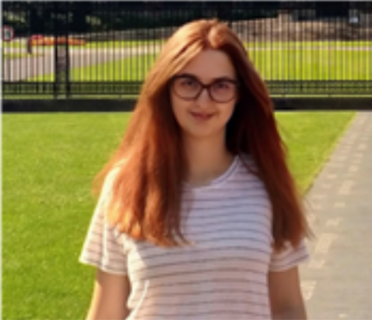12-Apr-2023 Dr. Raisa-Ioana Biega
On the 12th of April, Raisa-Ioana Biega currently a postdoc at the University of Twente will give a talk entitled:
Diversity of excitons in lead-free heterogeneous 3D and quasi-2D double perovskites: a first principles study
Halide double perovskites are a chemically diverse class of materials, with the general formula A2BB’X6, featuring a vast range of thermodynamically stable compounds with widely tunable optoelectronic properties [1, 2]. These materials feature chemical heterogeneity due to the alternating mono- and trivalent metal cations that build the inorganic crystalline lattice. Chemical substitution at metal sites is a very versatile technique for wide tunability of their optoelectronic properties. Dimensional reduction of the 3D lattice to a lower-dimensional derivative is another routinely used approach for gap and exciton engineering by exploiting the effects of quantum and dielectric confinement. Layered quasi-2D halide perovskites are highly heterogeneous due to the possibility of generating quasi-2D layered structures through intercalation with an organic sublattice. Experimentally, exciton binding energies of halide perovskites have been extracted from optical absorption measurements using Elliott’s theory [3], assuming the hydrogenic Wannier-Mott model [4].
In this talk, I will discuss how the electronic and optical properties of layered halide double perovskites are impacted by dimensional reduction of the inorganic lattice and its chemical composition. By means of ab initio many-body perturbation theory within the GW [5] approximation and the Bethe-Salpeter equation [6] approach I will unveil the limitations of the Wannier–Mott and Elliott models for the class of double perovskites. Furthermore, I will show that dimensional reduction of silver-pnictogen double perovskite to mono- and bilayer Ruddlesden-Popper and Dion-Jacobson structures has striking effects on the band structure and excitons. Our results are in line with the experimentally reported optical properties of these materials [7] and demonstrate that structural distortions, quantum confinement effects, and layer stacking can be used to tune exciton localization and binding energies in chemically complex quasi-2D materials.
[1] ACS Energy Lett. 2016, 1, 5359–5363
[2] Chem. Sci. 2019, 10, 11041
[3] Phys. Rev. 1937, 52, 191
[4] Phys. Rev. 1957, 108, 1384
[5] Phys. Rev. B 1987, 35, 5585–5601
[6] Phys. Rev. B 2000, 62, 4927–4944
[7] J. Am. Chem. Soc. 2018, 140, 5235–5240
Register at:
https://fau.zoom.us/webinar/register/WN_977toiECScWRqyecBru37A

